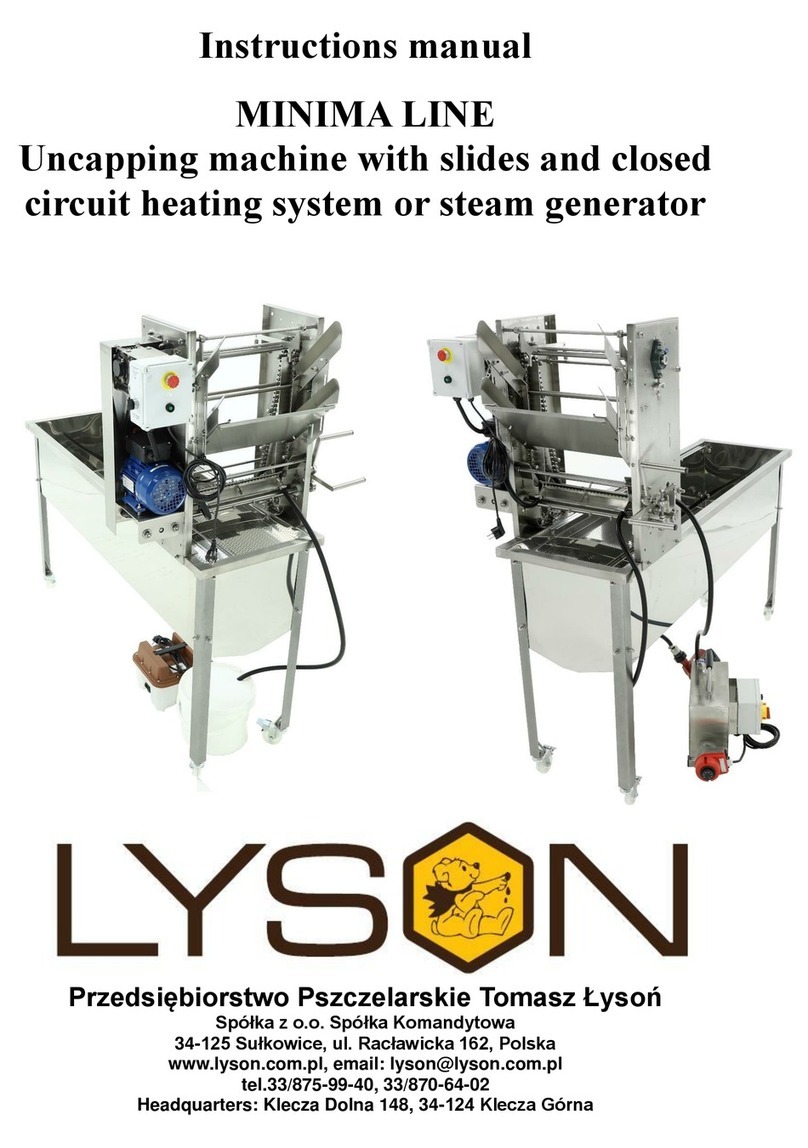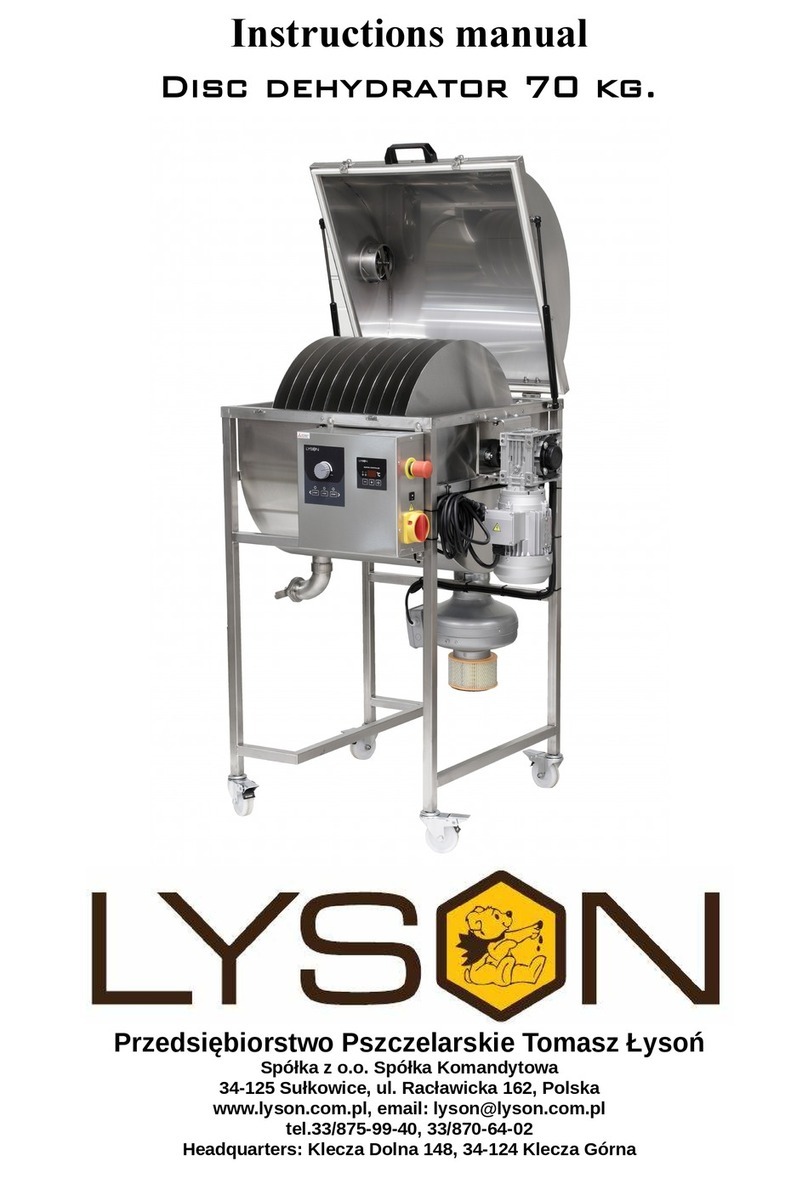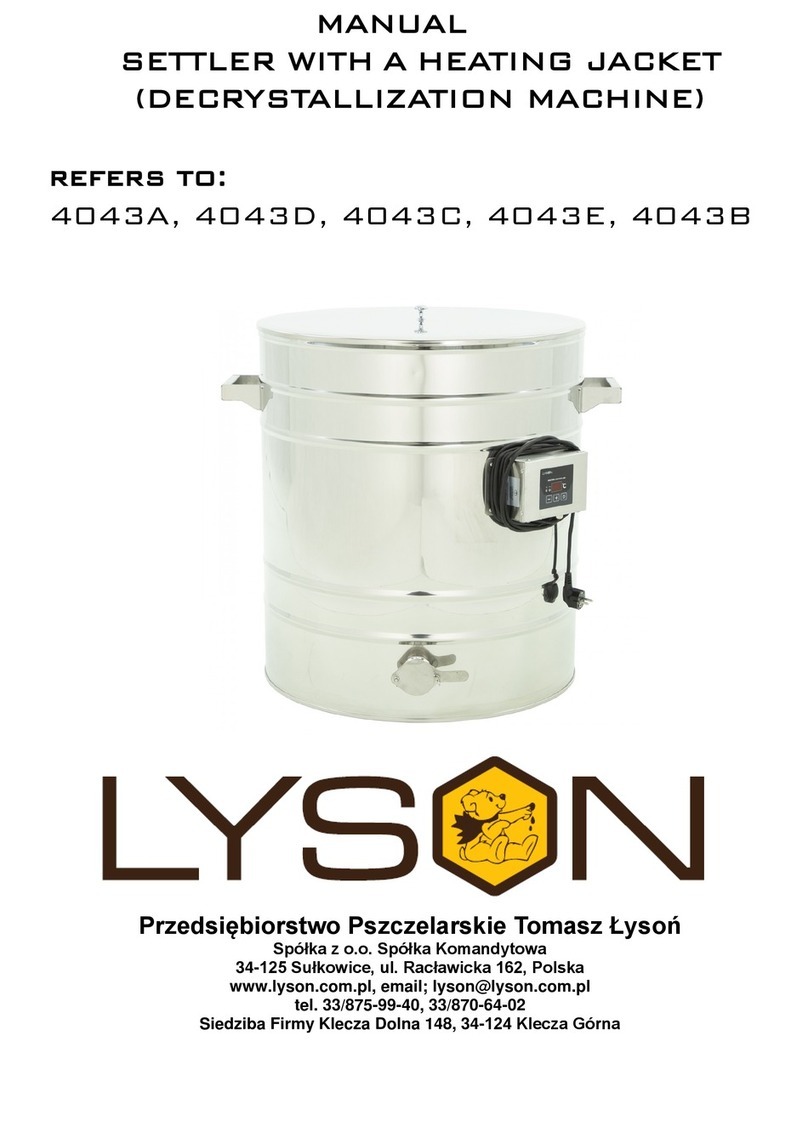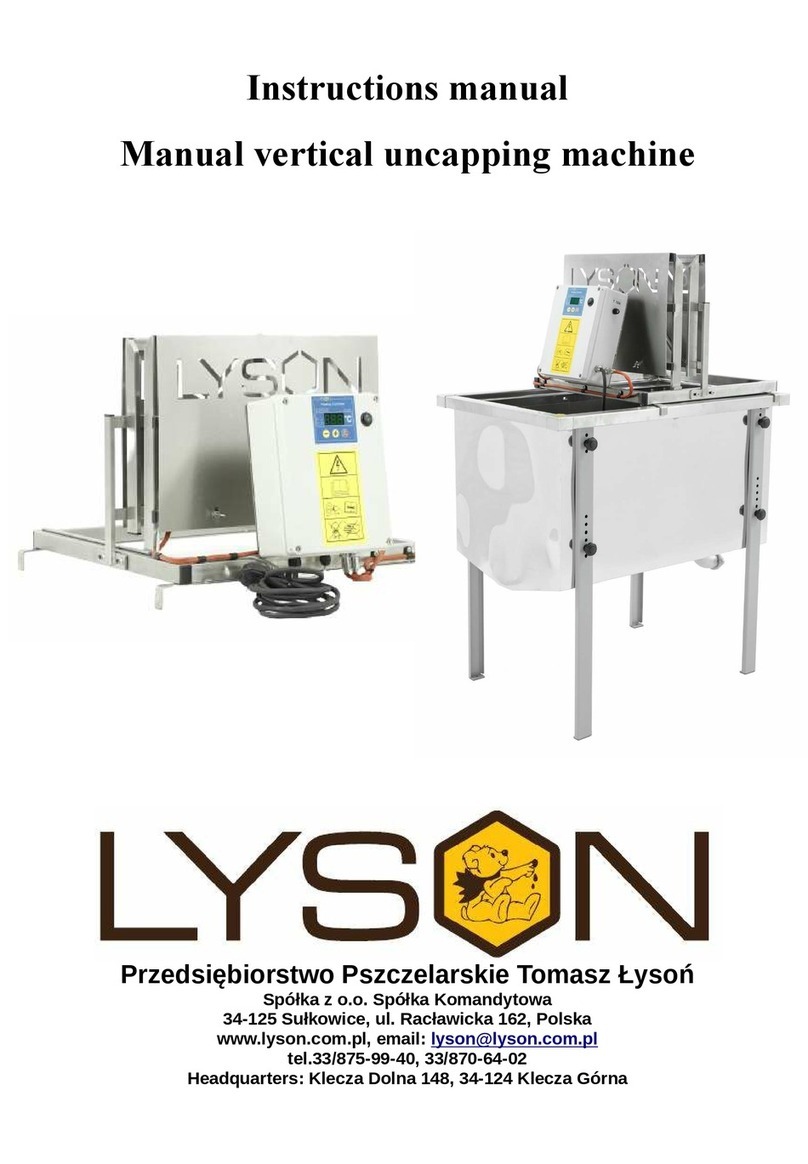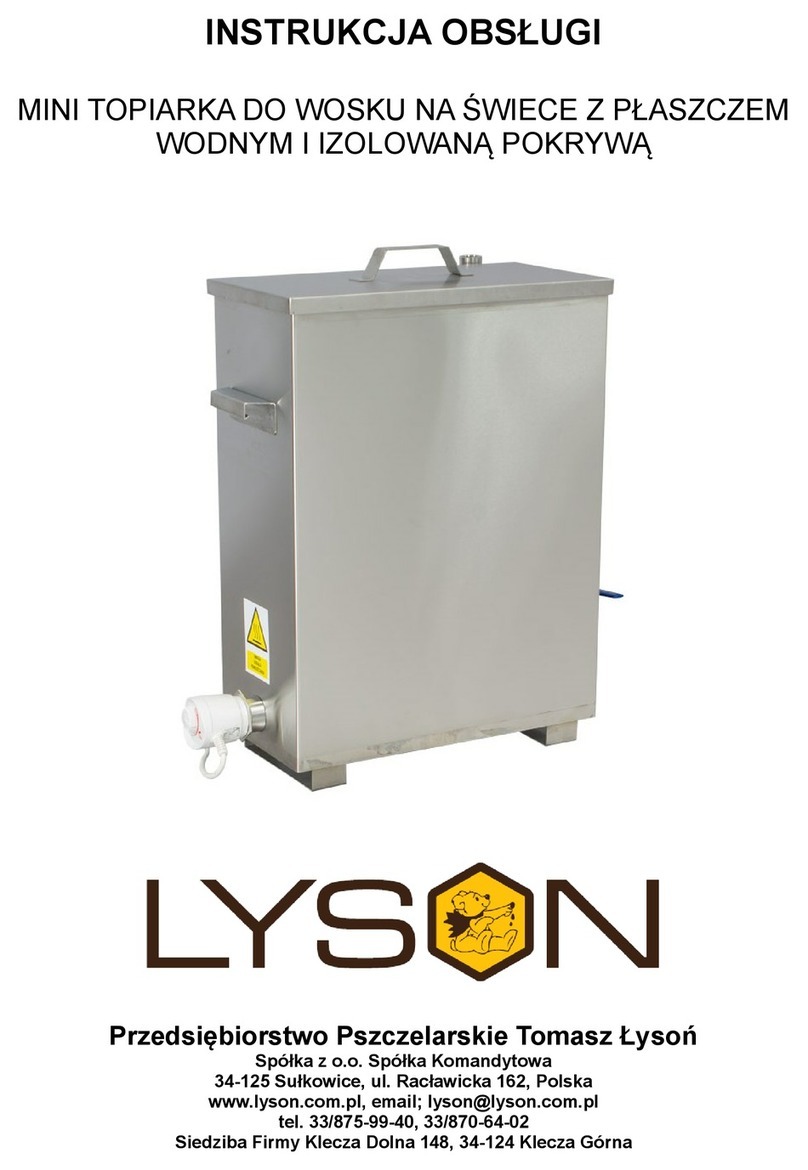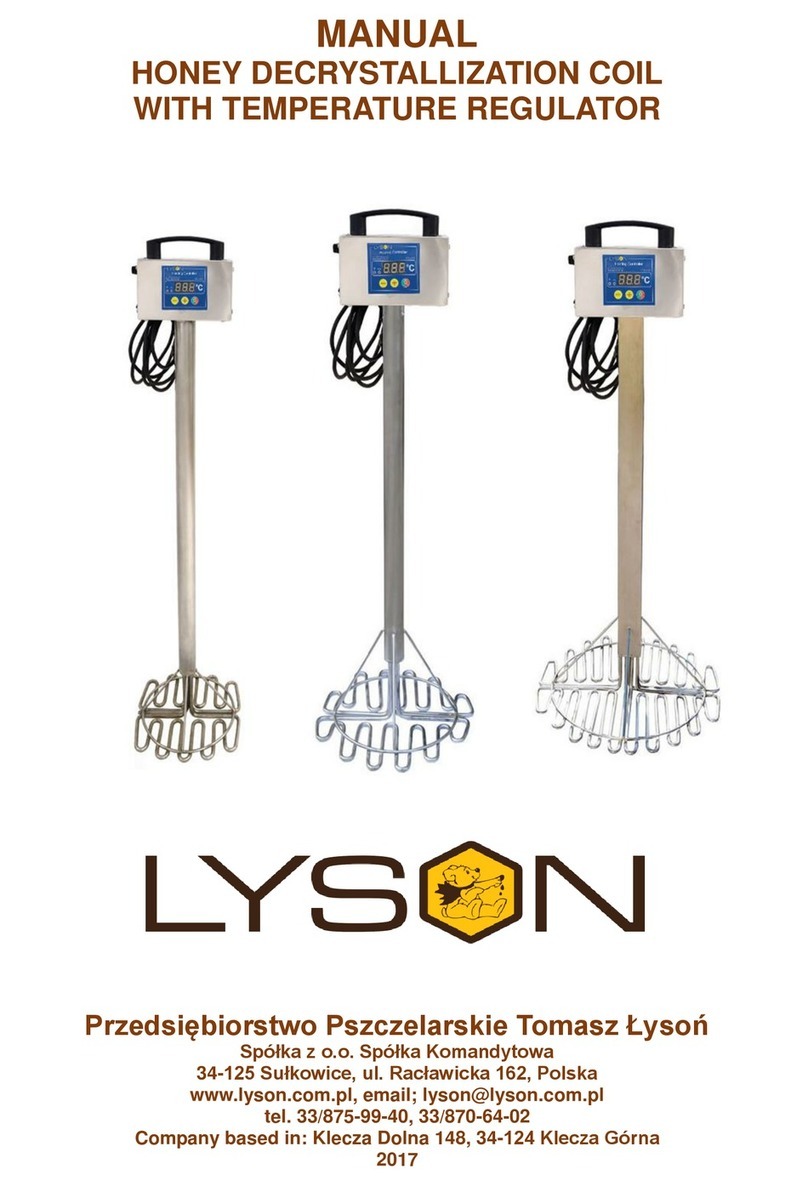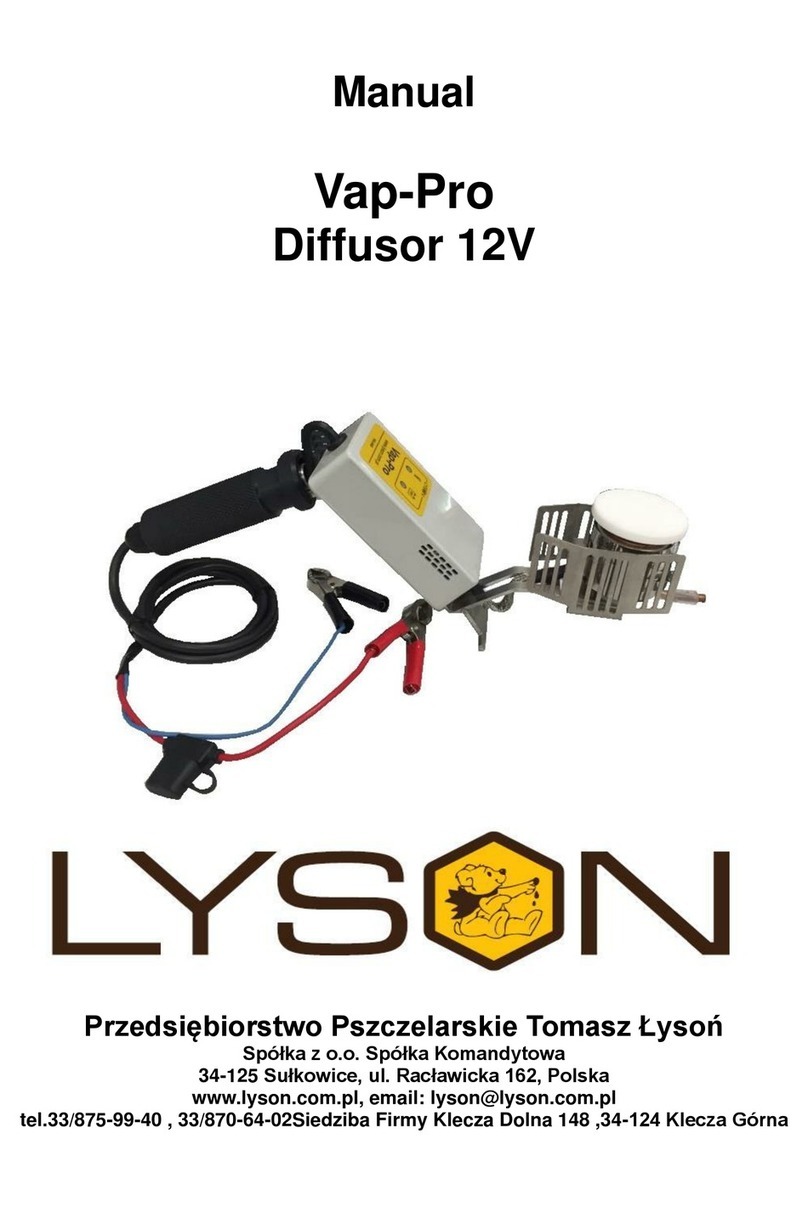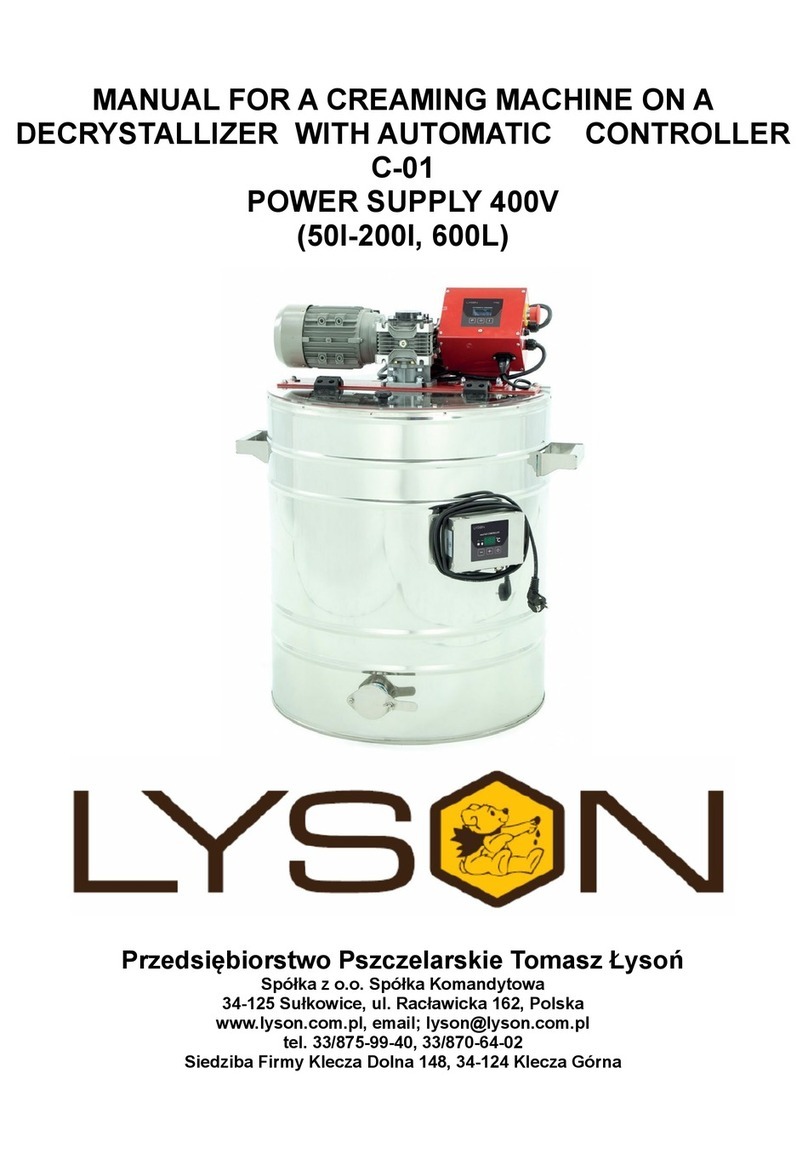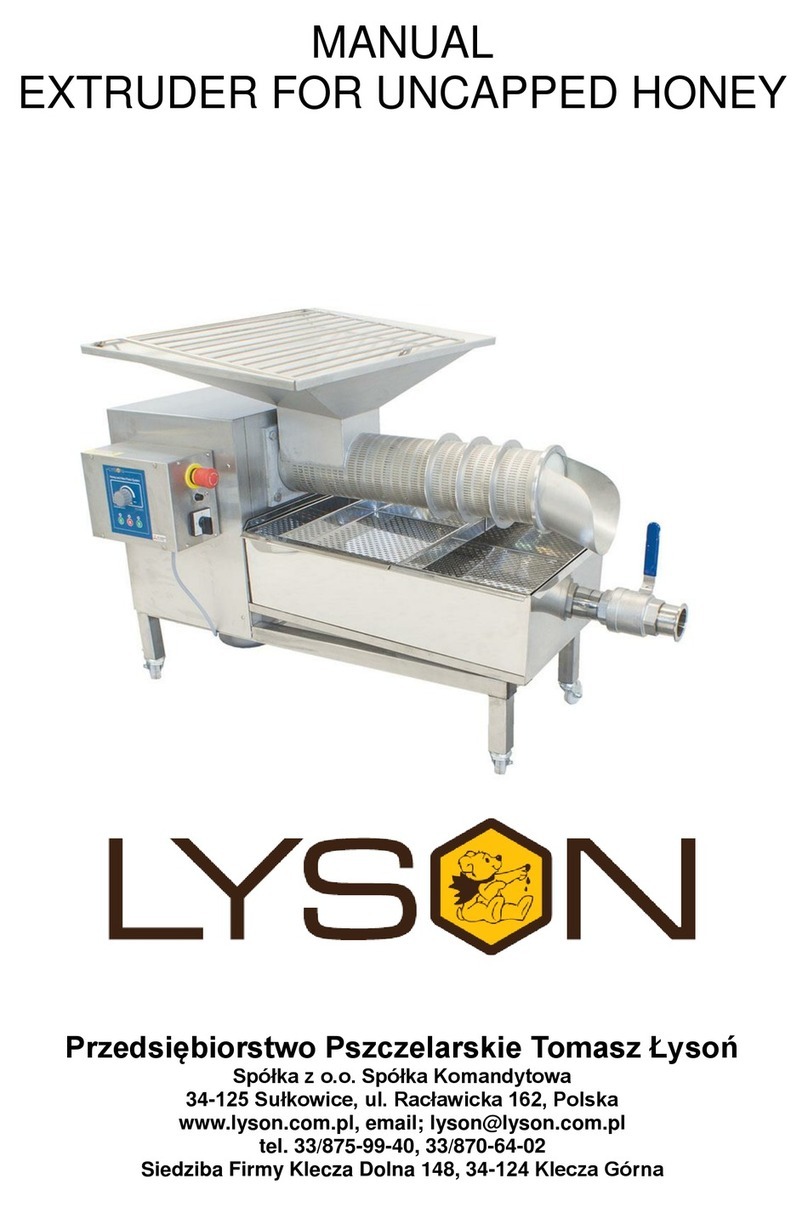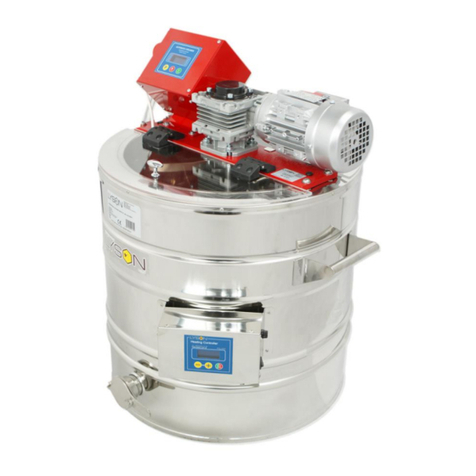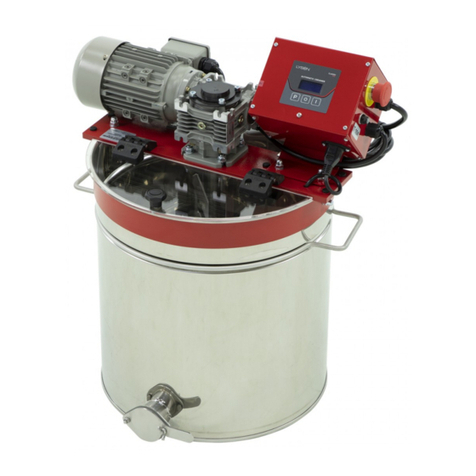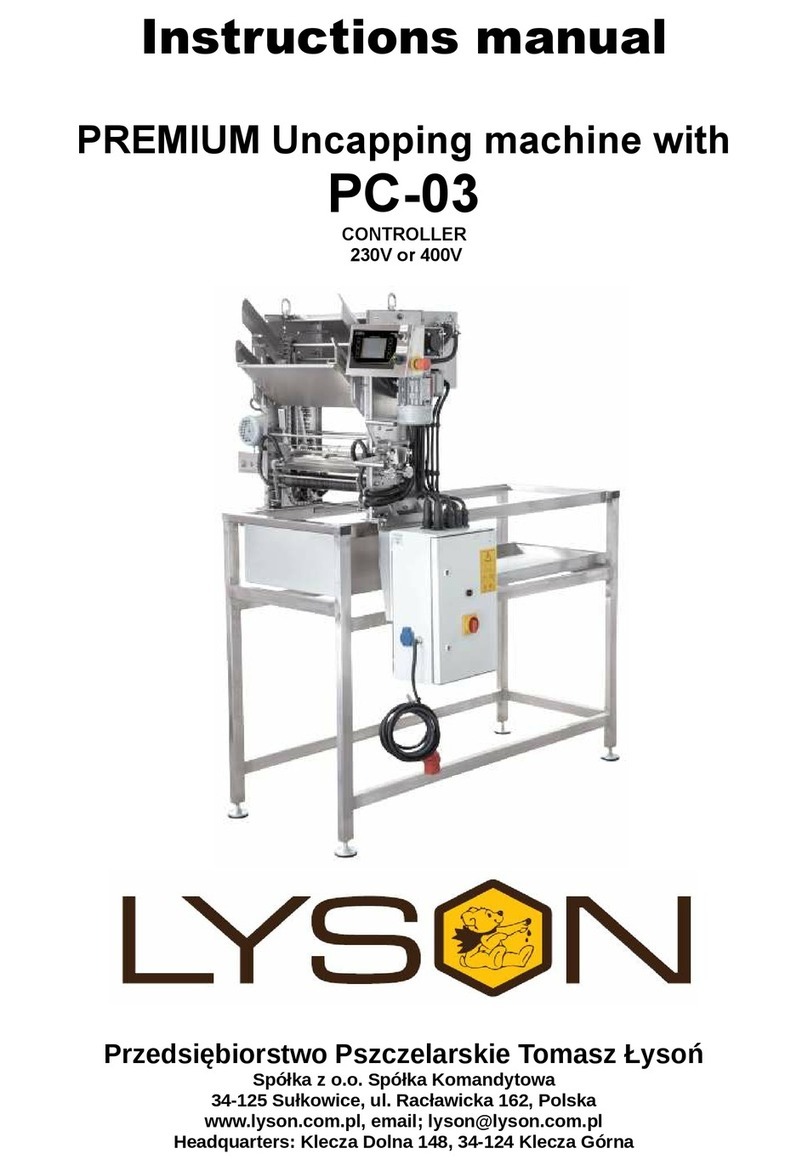Przed rozpoczęciem użytkowania urządzenia należy
dokładnie przeczytać instrukcję obsługi i postępować
według wskazówek w niej zawartych. Producent nie
odpowiada za szkody spowodowane użytkowaniem
urządzenia niezgodnie z jego przeznaczeniem lub
niewłaściwą jego obsługą.
PRZEZNACZENIE
Urządzenie przeznaczone do rozlewania,
przepompowywania i kremowania miodu.
BEZPIECZEŃSTWO ELEKTRYCZNE
a)
Urządzenie należy podłączyć do gniazda z uziemieniem o
napięciu określonym na tabliczce znamionowej wyrobu.
b)
Instalacja elektryczna zasilająca musi być wyposażona w
wyłącznik różnicowo-prądowy o znamionowym prądzie
zadziałania nie wyższym niż 30mA. Okresowo należy
sprawdzać działanie wyłącznika różnicowo-prądowego.
c)
Okresowo sprawdzaj stan przewodów zasilających. Jeżeli
przewód zasilający nieodłączalny ulegnie uszkodzeniu i
trzeba go wymienić, to czynność ta powinna być
wykonana u gwaranta lub przez specjalistyczny zakład
naprawczy albo przez wykwalifikowaną osobę w celu
uniknięcia zagrożenia.
d)
Nie używać urządzenia, gdy przewód zasilający jest
uszkodzony.
e)
Okresowo sprawdzaj stan przewodu zasilającego. Jeżeli
przewód zasilający odłączalny ulegnie uszkodzeniu to
należy go wymienić na przewód tego samego typu. Nie
używać urządzenia, gdy przewód zasilający jest
uszkodzony.
BEZPIECZEŃSTWO UŻYTKOWANIA
a)
Niniejszy sprzęt nie jest przeznaczony do użytkowania
przez osoby (w tym dzieci) o ograniczonej zdolności
fizycznej, czuciowej lub psychicznej lub osoby nie mające
doświadczenia lub znajomości sprzętu, chyba, że odbywa
się to pod nadzorem lub zgodnie z instrukcją użytkowania
sprzętu, przekazanej przez osoby odpowiadające za ich
bezpieczeństwo. Należy zwracać uwagę na dzieci, aby
nie bawiły się urządzeniem.
b)
W przypadku uszkodzenia urządzenia, w celu uniknięcia
zagrożenia, naprawę może przeprowadzić tylko
specjalistyczny zakład naprawczy albo wykwalifikowana
osoba.
c)
Nie korzystaj z urządzenia w pobliżu materiałów
łatwopalnych.
d)
Zabrania się prowadzić jakichkolwiek prac
konserwacyjnych podczas pracy urządzenia.
e)
W przypadku jakiegokolwiek zagrożenia należy
bezzwłocznie wyłączyć urządzenie.
f)
Ponowne uruchomienie urządzenia może nastąpić po
wyeliminowaniu zagrożenia.
g)
Urządzenie może być uruchamiane tylko wewnątrz
pomieszczeń. Urządzenie nie jest przystosowane do
pracy na zewnątrz pomieszczeń.
h)
Należy chronić sterowanie przed wilgocią; (również
podczas przechowywania)
i)
Zabrania się ciągnąć za przewód zasilający.
j)
Przewód zasilający należy trzymać z dala od źródeł
ciepła, ostrych krawędzi oraz dbać o jego dobry stan.
UWAGA!
MIÓD PRZEZNACZONY DO DOZOWANIA NALEŻY
OGRZAĆ DO TEMPERATURY 30°C.
W CELU DOSZCZELNIENIA MODUŁU
DOZUJĄCEGO PRZED ROZPOCZĘCIEM PRACY Z
URZĄDZENIEM NALEŻY ZALAĆ GO MIODEM
Wymagane temperatury minimalne dla miodu:
•świeżo odwirowany, ciekły :20 - 25°C
•miód wrzosowy, kremowy lub z małą zawartością wody
ok <16% : 25-35°C
•maksymalna temperatura napełnianego miodu
wynosi MAX 40°C
Nie przestrzeganie zaleceń dot. temperatury miodu
może spowodować uszkodzenie maszyny, za co
producent nie ponosi odpowiedzialności. Produkt
uszkodzony w wyniku stosowanie niezgodnie z
przeznaczeniem nie podlega gwarancji.
Wskazówki:
1.
Podłączamy wąż do modułu dozującego za
pomocą klamry, uważając na poprawne osadzenie
uszczelki.
2.
Później do drugiego końca węża wlewamy około 1 kg
miodu (tj. słoik 0,95 kg.)
3.
Należy trzymać przewód do góry dotąd aż miód
spłynie do modułu zębatego (pompy).
Przewód jest przeźroczysty więc widać kiedy miód
dopłynie do pompy.
Przed naciśnięciem przycisku START należy
uruchomić funkcję KREMOWANIA
Gdy miód dopłynie do pompy należy
nacisnąć przycisk „START” Zielony
przycisk z prawej strony wyświetlacza
4.
Należy pamiętać aby pod pompę (dozownik) podłożyć
pojemnik lub słoik na miód.
5.
W momencie kiedy przepompuje się wlany wcześniej
do przewodu miód zatrzymujemy pracę pompy
naciskając ponownie przycisk „START”.
6.
Po wykonaniu powyższych czynności wkładamy
przewód od pompy do beczki z miodem i
rozpoczynamy dozowanie lub pompowanie.
7.
Należy przepuścić niewielką ilość miodu aby usunąć
powietrze, które pozostało w przewodzie.
